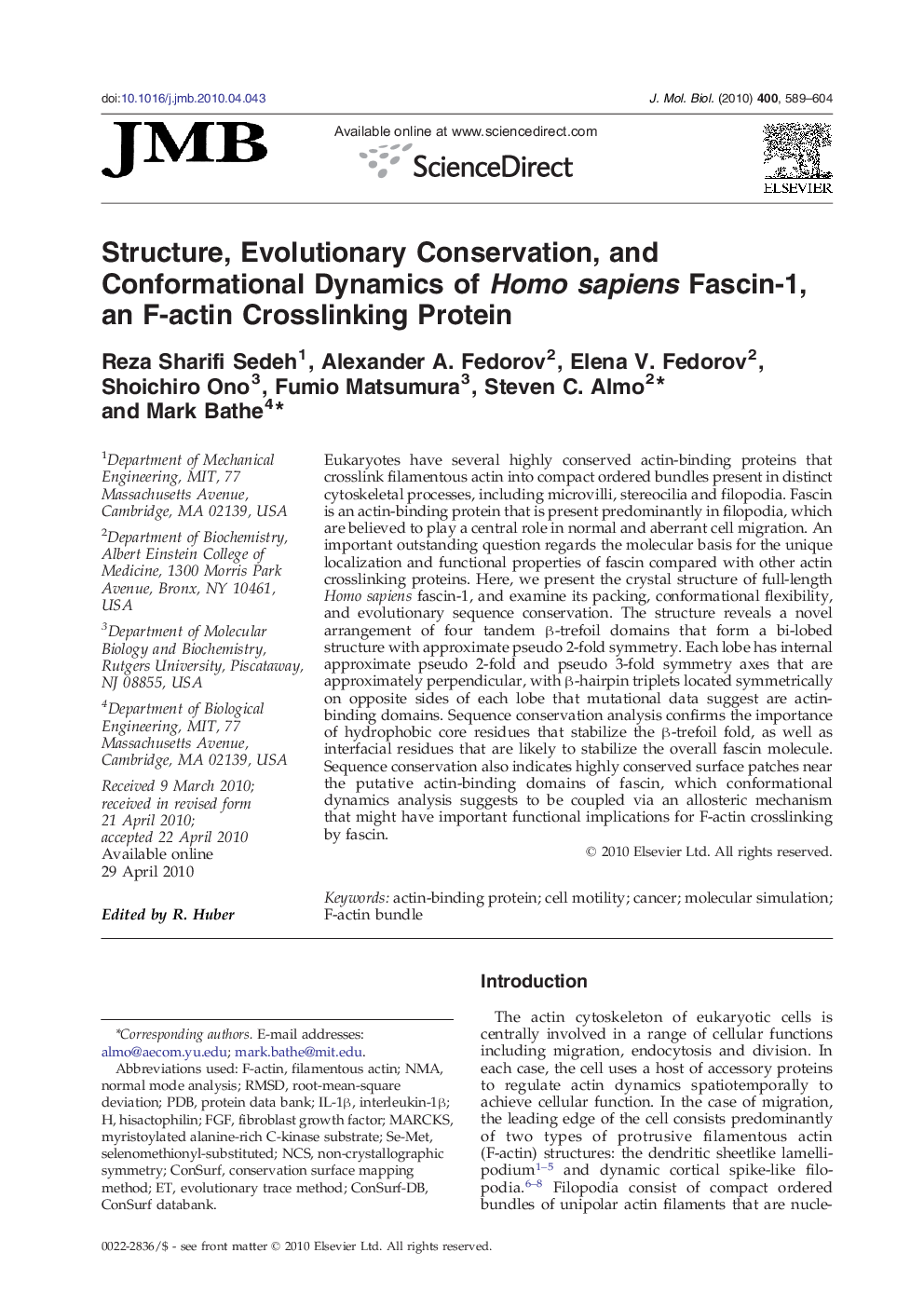| Article ID | Journal | Published Year | Pages | File Type |
|---|---|---|---|---|
| 2185836 | Journal of Molecular Biology | 2010 | 16 Pages |
Eukaryotes have several highly conserved actin-binding proteins that crosslink filamentous actin into compact ordered bundles present in distinct cytoskeletal processes, including microvilli, stereocilia and filopodia. Fascin is an actin-binding protein that is present predominantly in filopodia, which are believed to play a central role in normal and aberrant cell migration. An important outstanding question regards the molecular basis for the unique localization and functional properties of fascin compared with other actin crosslinking proteins. Here, we present the crystal structure of full-length Homo sapiens fascin-1, and examine its packing, conformational flexibility, and evolutionary sequence conservation. The structure reveals a novel arrangement of four tandem β-trefoil domains that form a bi-lobed structure with approximate pseudo 2-fold symmetry. Each lobe has internal approximate pseudo 2-fold and pseudo 3-fold symmetry axes that are approximately perpendicular, with β-hairpin triplets located symmetrically on opposite sides of each lobe that mutational data suggest are actin-binding domains. Sequence conservation analysis confirms the importance of hydrophobic core residues that stabilize the β-trefoil fold, as well as interfacial residues that are likely to stabilize the overall fascin molecule. Sequence conservation also indicates highly conserved surface patches near the putative actin-binding domains of fascin, which conformational dynamics analysis suggests to be coupled via an allosteric mechanism that might have important functional implications for F-actin crosslinking by fascin.
